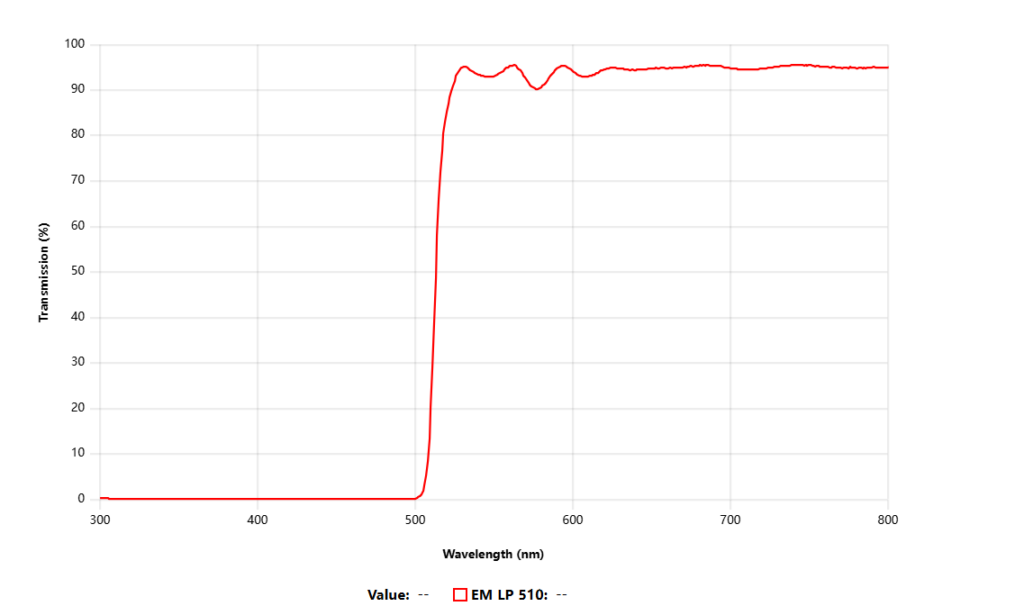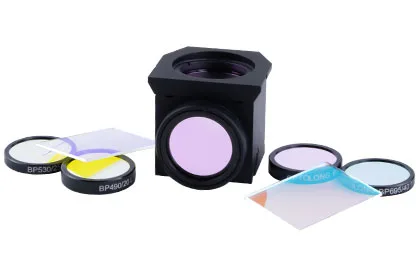When it comes to optical filtering, two common terms that are often encountered are “longpass” and “bandpass” filters. These filters are integral components in many scientific, industrial, and consumer applications, such as fluorescence microscopy, spectroscopy, photography, and environmental monitoring.
Understanding the difference between these two types of filters can help in selecting the most appropriate filter for a specific use case. This article explores the technical aspects of longpass and bandpass filters, their working principles, key differences, and applications.
Understanding Optical Filters
Optical filters are devices that selectively transmit or block wavelengths of light. They work based on the principles of interference, absorption, or both.
Filters can be roughly divided into two categories: absorption filters (which use material properties to block certain wavelengths) and interference filters (which use optical coatings to reflect or transmit specific wavelengths of light).
What is a Long Pass Filter?

Long pass filters, also called long wave pass filters, are designed to allow light with wavelengths greater than a specified cutoff point to pass through while blocking shorter wavelengths. The cutoff wavelength is usually expressed as the point at which the transmittance reaches 50%. For example, a 600 nm long pass filter will begin to effectively transmit light with wavelengths above 600 nm.
Long-pass filters work by blocking shorter wavelengths, typically using a combination of dielectric coatings and absorbing materials. The dielectric layers are structured to create constructive interference with longer wavelengths, promoting efficient transmission. At the same time, destructive interference blocks unwanted shorter wavelengths.
1. Key Characteristics of Long Pass Filters
- Cutoff Wavelength: The specific wavelength at which a filter transitions from blocking light to transmitting light.
- Transition Steepness: Refers to how quickly a filter transitions from full blocking to full transmission near the cutoff point.
- High Transmission: Above the cutoff wavelength, long pass filters typically offer high transmission, typically above 90%.
2. Applications of Long Pass Filters
- Fluorescence Microscopy: Isolation of emitted fluorescence signals by blocking excitation wavelengths.
- Infrared Imaging: Allows only infrared light to pass through, aiding thermal imaging applications.
- Environmental Sensing: Filters out unwanted visible light for precise infrared sensing.
- Photography: Enhances contrast and clarity by blocking UV or blue light, depending on the desired effect.
What is a Bandpass Filter?

Bandpass filters transmit only light within a specific wavelength range, blocking light on either side of the band. The center wavelength (CWL) and full width at half maximum (FWHM) define the key characteristics of a bandpass filter. FWHM is the bandwidth over which transmission remains at least 50% of the maximum value.
Bandpass filters work by using multiple dielectric layers designed to produce multiple interference effects. Constructive interference allows light within a specified bandwidth to pass, while destructive interference blocks light outside this range. The design must be precise to achieve a narrow and well-defined transmission band.
1. Key Characteristics of Bandpass Filters
- Center Wavelength (CWL): The midpoint of the filter’s transmission band.
- Bandwidth (FWHM): The width of the wavelength range over which light is effectively transmitted.
- Blocking Range: Bandpass filters effectively block light outside the transmission band, typically achieving an optical density of 5 or more.
2. Applications of Bandpass Filters
- Laser Applications: Used to isolate specific laser wavelengths in optical devices.
- Medical Diagnostics: Often used in imaging systems such as flow cytometry and fluorescence spectroscopy.
- Environmental monitoring: Filtering specific wavelengths for remote sensing and pollution analysis.
- Astronomy: Used in telescopes to isolate specific spectral lines from astronomical objects.
Key Differences Between Longpass and Bandpass Filters
1. Transmission Range
- Longpass Filters: Transmit wavelengths longer than the specified cutoff.
- Bandpass Filters: Transmit wavelengths only within a defined range.
2. Wavelength Selection
- Longpass Filters: Used when only shorter wavelengths need to be blocked.
- Bandpass Filters: Used when precise wavelength selection is critical.
3. Blocking Characteristics
- Longpass Filters: Block wavelengths below the cutoff, usually with less demand for sharp transitions.
- Bandpass Filters: Require high blocking efficiency outside the transmission band, which may involve complex coating designs.
4. Applications
- Longpass Filters: Ideal for general wavelength separation tasks, such as enhancing infrared signals.
- Bandpass Filters: Suitable for applications that require precise wavelength control, such as isolating specific emissions or laser lines.
5. Design Complexity
- Longpass Filters: Simpler to design and manufacture than Bandpass Filters.
- Bandpass Filters: Often involve complex multilayer designs to achieve the desired optical properties.
How to Decide Whether to Choose a Longpass or Bandpass Filter?
1. Factors to Consider
- Application requirements: For tasks that require wide wavelength separation, a longpass filter may be sufficient. However, for applications that require high spectral resolution, a bandpass filter is essential.
- Spectral range: Determine the wavelength range of interest and whether light outside this range must be blocked.
- Filter performance: Consider parameters such as transmission efficiency, optical density, and transition steepness.
- Cost and availability: Bandpass filters tend to be more expensive due to their complex design and manufacturing process.
2. Real-World Scenarios
- Fluorescence imaging: A combination of bandpass and longpass filters is often used to effectively separate excitation and emission signals.
- Laser systems: Bandpass filters are suitable for precise laser line isolation, while longpass filters can manage background light.
Conclusion
Understanding the differences between longpass and bandpass filters is essential for optimizing optical systems in a variety of applications. Longpass filters offer a straightforward way to filter out shorter wavelengths, making them useful for tasks such as infrared imaging and general wavelength isolation. Bandpass filters, on the other hand, offer excellent wavelength selectivity, making them indispensable for scientific and industrial applications that require precision.
Both types of filters have their unique advantages and are essential tools in modern optical technology. Choosing the right filter depends on your specific needs, performance criteria, and budget. By carefully considering these factors, you can improve the efficiency of your optical system and achieve your desired results efficiently.
Related reading: Long Pass and Short Pass Filter
